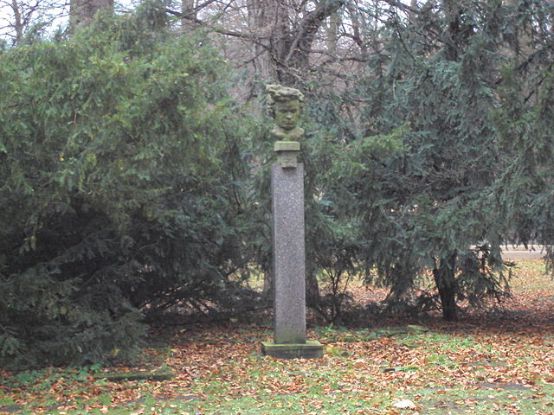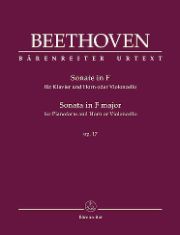Execute with tamping technique
A cello part was added to the Sonata for Piano and Horn op. 17 when it was first published. However, it unfolds its tonal charm with the natural horn.

After Henle 2002 and Schott 2013, there is currently no shortage of Urtext editions of Beethoven's Opus 17. Now Bärenreiter-Verlag is following suit with an extremely convenient new publication by Jonathan Del Mar, known for his Critical Edition of the Beethoven symphonies, which is now used by most conductors.
The horn sonata was first played on April 18, 1800 in a concert at the Kärntnertor Theater in Vienna with Beethoven at the pianoforte and the horn player Giovanni Punto, who was in Vienna at the time. The Bohemian horn virtuoso, originally named Jan Václav Stich, had already caused a sensation in Paris in 1778, where Wolfgang Amadeus Mozart had him as the soloist in his Sinfonia concertante KV 297b. "Now I will make a sinfonia concertante for flauto Wendling, oboe Ramm, punto French horn and Ritter bassoon. Punto blows magnifique," he wrote in a letter to his father Leopold. Punto was not only successful as a horn player, but also as a violin virtuoso and composer; numerous chamber music works and 14 printed horn concertos bear witness to his creative output.
Beethoven's Sonata for fortepiano and French horn was not dedicated to Punto due to the importance of the piano, but to "Madame la Baronne de Braun", who was also the dedicatee of the two piano sonatas op. 14. Presumably for sales reasons, the Viennese publisher Tranquillo Mollo added a cello part in 1801, which is said to be by the composer himself. In the reviewer's opinion, however, this is a "genuine" horn sonata. It thrives on the dialog between the virtuoso piano and the rather unwieldy and chromatic passages of the natural horn, which have to be executed by means of the stopping technique - a reason to play this sonata only on the natural horn.
Ludwig van Beethoven: Sonata for Piano and Horn or Violoncello in F major op. 17, edited by Jonathan Del Mar, BA 10939, € 16.95, Bärenreiter, Kassel








